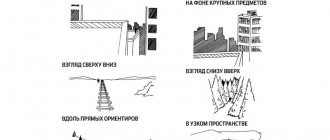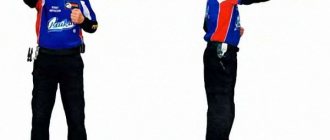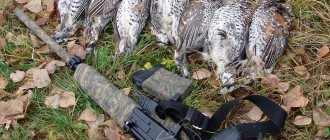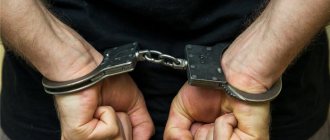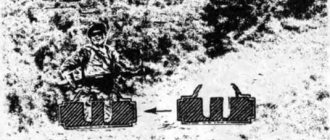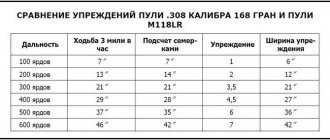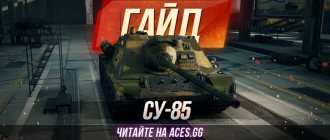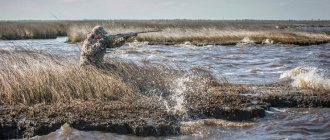Memo to the scout: Basic principles of camouflage
Camouflage is a set of ways to make oneself and equipment invisible against the background of the environment or different from what they really are. Main camouflage characteristics:
The content of the article
Form
The human body, helmet, equipment, weapons have a clear shape, which is easy to recognize because there are no such shapes in nature. We even recognize a person in those things that have similar shapes. The shape of the head and shoulders is unmistakably recognizable. This habitual form will be broken and deformed by the placement of strips of burlap on the body, the use of a hood, camouflage and mosquito nets, and the use of local vegetation. You need to know when to stop so that camouflage does not impede access to equipment and the functioning of weapons. Covering behind landscape elements is also applicable.
Placing loops and elastic bands on the equipment will make it easy to attach elements to them later
local camouflage . In this case, it is necessary to separate the roots from the plants, because they don't grow in the air. Vegetation must be selected in accordance with the location of the operations, so that it does not turn out that reeds are walking in the desert.
The leaves on the underside are lighter than on the top. Leaves and branches in different areas are oriented at different angles relative to the horizon. Vegetation cut during wet periods (night, rain, dew) lives longer. Leaves that are stronger and stronger, as well as those grown in a sunny place, stay fresh longer.
The weapon should not be completely masked in the same way, because... this may interfere with its functioning and handling. It is preferable to cover it with paint or camouflage tape.
Blik
The glitter and reflections may be enough to reveal the location.
The main part of a fighter’s equipment that reflects light well day and night is his skin (even very dark ones). To distort the shape of the face and reduce its visibility, you can use camouflage makeup (creams, paints). Camouflaging your face with makeup is useful even when using a full-face mask, because... covers the areas around the eyes. The basic principle of face painting is that the protruding parts (nose, cheekbones, chin, ears and forehead) are painted in dark tones, and the hollows (eye sockets, shaded areas near the nose and chin) are painted in light tones. It is easier to apply makeup if you first apply baby oil, lotion or repellent to your face. Spotted makeup is used for deciduous and desert areas, cut makeup is used for coniferous, grassy and jungle areas. Paint the shell and the back of the ears with at least two colors, breaking up the outlines.
Modern military equipment primarily uses matte clasps and buckles. If for some reason they become shiny, they need to be hidden with paint or adhesive tape. Other glare objects are protective helmets without covers, binoculars and monoculars, sights, watches and their bracelets, compasses, plastic tablets, safety glasses, sheets of notepads and books, dishes, mirrors, starched clothes, shiny visors of hats.
The shine of glasses is partly neutralized by a low-brimmed hat or mosquito net, but other shiny equipment should be hidden and used carefully, only when necessary.
When the reticle is placed in front of the lenses, visibility deteriorates, but not significantly, and this can be neglected. The solar filter is a standard protection for the front lenses, creating a shadow on them. Honeycomb (perforated) nozzles are also suitable.
Avoid lighting open fires, smoking, and flashlight glare. The life of not only the one who smokes or shines, but also his associates depends on this.
Red filters on flashlights are better at camouflage than blue or green ones. The optics are partially hidden by cylindrical paper lens attachments. Vehicle lighting should be kept turned off, or crevice nozzles should be used.
Silhouette
Like the shape, the silhouette reveals the outline of equipment and figure.
It is important to evaluate your position from the point of view of an observer (ground and air), and avoid appearing against a contrasting background - in this case, no camouflage will help. You should avoid appearing against the sky, an uncurtained window, crossing the horizon, going over a ridge, hill, or house. The outlines of the figure can be hidden by the outlines of local objects. In open areas you should crawl.
To reduce the visibility of the silhouette, it is better to keep your arms pressed to your body and your legs brought together. Even squatting significantly changes your usual figure.
Sound
People are making noise - boots creaking, magazines and tools clanking in pouches, backpacks creaking, weapons clanking, radio blaring. Cough and speech carry far, especially at night, early in the morning, after rain, in fog. It is necessary to pack tightly, secure belts and other equipment (using adhesive tape and the like), and check the success of the camouflage by jumping in place before leaving. Sounds need to be suppressed, the very reasons for their appearance must be eliminated. It is better to replace orders with hand signals, and conversation with whispers.
When digging in, sentries must be placed at such a distance that they notice the enemy before he hears the sounds of digging.
Shadow
It is convenient to hide in the shadow, but it can also be an enemy; it increases the size of the object and “attaches” a dark spot to it. You need to position yourself correctly relative to the light sources, hiding in the shadows of local objects, and avoid casting a shadow on the illuminated space. The closer a fighter is to the ground, the shorter the shadow he casts.
Smell
Even a city person has a good sense of smell (recovered after a few days in the field), allowing him to recognize the smells of engines, weapons, kitchens, human bodies and excrement. Some odors are difficult to get rid of.
Toothpaste, shaving cream, deodorant are prohibited. You should use unscented soap, be careful when choosing a repellent, and cook during the day when other odors are stronger and the air is warmer. Kitchen waste should be removed from the action area, only if this is not possible, by burying it on site. As a rule, animals dig up this waste, and from it it is easy to draw conclusions about the size of the group, etc.
Smokers are very noticeable. Even if a person does not smoke at the moment, clothes and equipment smell of smoke. Spitting chewing tobacco marks the route and stopping places. Non-smoking fighters smell better.
Color
Although modern uniforms are mostly colored in a pattern that breaks up the outline, this does not always help. A drawing that does not match the background, on the contrary, screams “hey, look at me.” The vegetation used for camouflage soon withers and changes color, and the dried leaves curl up. Greenery chosen for camouflage in a meadow gives away the fighter when he moves into the forest. Natural camouflage needs to be changed on time.
Being on the border of colors, especially light and dark, makes detection difficult. Skin color must be masked using makeup and other methods from the “Highlight” section.
In winter, in dense forests and on trails, to achieve the greatest secrecy, it is preferable to wear “snow” trousers and an “autumn” jacket. In bushes or waist-deep undergrowth - a “snow” jacket and “autumn” trousers. In open areas and in the mountains above vegetation - a full “snow” suit. In view of the enemy, moving in a white suit should be bent or crawling; walking at full height is too noticeable.
Be sure to camouflage equipment, devices, weapons, wrapping them with tape, using unstable paint, etc.
Location
A person is accustomed to seeing certain things in certain places, and attention is attracted by what looks unnatural, “out of place.” For example, reeds in an open field. The human figure in a natural environment looks superfluous, so it is necessary to adapt to the terrain, merging with the surrounding environment, sit on the slopes of hills, avoid road intersections, lonely buildings and - especially - open spaces.
People tend to maintain a distance of 15 meters from each other, especially when trying to hide in a group, but nothing in nature is uniform. The classic military distribution is a five-meter gap from person to person. It is easier for an observer to notice a bunch of soldiers gathered together than the same number of soldiers spread out over the area. The same goes for technology.
To look more natural, it is preferable to move so that everyone sees two people in front of him and two behind him (of course, except for the guides/leaders and if there are at least five people in the group), however, this depends on the terrain. In this way, gesture signals can be transmitted in both directions.
Movement
The most insidious traitor is movement. You can break one or two of the prohibitions listed above and remain unnoticed. But as soon as you move, observing them, the fighter is noticed. Having taken a defensive position, you should remain motionless:
- Mosquitoes and ants eat - peace of mind;
- If you want to urinate, you have to endure it or shit in your pants;
- When looking around, you need to move your eyes, keeping head movements to a minimum.
In an offensive, you need to move, using cover and/or cover, and choose paths where enemy observation is difficult or impossible. It is advisable to move while remaining in the shade. If you have to move, you need to first think through the movements, and only then - move slowly. A stationary object may remain invisible, a slowly moving object is difficult to notice, a fast moving one will definitely be noticed.
It is useful to choose moments to move when, for example, the wind is moving the branches around. In tall grass, you should change the direction of movement, since the straight swaying of the vegetation attracts the enemy’s attention.
Hand signals should be given in such a way that only friendly fighters can notice them, but not the enemy. Sudden turns of the head should be avoided, because this movement is more noticeable than the smooth raising and lowering of it.
Night-vision devices
The NVG confidently detects the weakest light sources, enhancing the brightness of the observed image. The unmasking of an observer using NVGs is facilitated by both IR illumination (for devices with backlighting) and the reflection on the observer’s face from the eyepiece of the device.
What matters for camouflage is the similarity between the display of the uniform and the natural (artificial) background, and not the reflective properties of the uniform itself. The use of detergents intended for civilian clothing destroys the camouflage impregnation of the uniform and contributes to greater visibility of the soldier in NVGs. Wilted vegetation protects against NVD worse than fresh vegetation.
Thermal imagers
Suits for optical camouflage (“ghillie”, “goblin”, “kikimora”, “shaman”), due to their multi-layered nature and structure, help reduce the visibility of a fighter in the thermal spectrum and effectively distort the silhouette. You should use a “thermal shadow” from objects and structures that distorts the thermal outlines.
Camouflage camouflage
Camouflage camouflage of the “Gilli” type or “Leshy suit” is a camouflage uniform or outer cape covered with pieces of an indeterminate shape of camouflage color.
The suit trim strips are folded in half and sewn mainly on the legs, arms, shoulders and back. They are then frayed or cut lengthwise to give the costume a “vegetal” look. The suit may also include fine mesh sewn at the back of the shoulder neckline, which is draped over the head like a blanket. It is used to camouflage the outline of the head, the optical sight, to provide the ability to move the arms without fear of being detected, and also to conceal the ejection of cartridges.
When the cover is draped over the head, it should be lowered to the level of the belt, to which camouflage trim should be attached to hide the outline of the head and large pieces of netting. When walking, the sniper throws the blanket behind his head so that nothing impairs his vision or interferes with his movements.
A group of snipers in camouflage
You should always remember that a camouflage suit does not make a person invisible. The sniper must always take advantage of natural camouflage and cover. Small loops are sewn onto the suit to insert freshly picked natural vegetation into them: branches, grass and other plants, preferably those that do not wither for a long time.
By wearing a camouflage suit, the sniper will stand out from ordinary military units, making him a prime target for enemy soldiers. Therefore, this suit should only be worn when the sniper is performing a special combat mission separate from his main unit.
If you do not have the necessary components to create a full-fledged camouflage suit, then using the appropriate techniques and materials you can make a temporary suit.
In particular, the finishing can be replaced with scraps cut from socks, linen bags or any other material at hand. The material is then attached to the suit in the same way, it is important to hide the texture and outline of the uniform.
The color of fabric or other material can be varied using dirt, coal, paint, or coffee grounds. Oil or grease should not be used because of their strong odor, and real foliage attached to the artificial camouflage helps to blend the costume into the general background. It must be replaced as it ages or when the terrain changes.
Camouflage in various types of terrain and geographical areas
It goes without saying that the same type of camouflage cannot be used in all types of terrain and geographic areas.
Before conducting an operation in any area, the sniper must study the area, its vegetation and soil in order to determine the best type of personal camouflage.
Disguising a sniper and his weapon in the forest
In areas with a lot of snow or in forested areas where the bushes are mostly covered with snow, an all-white (or with a gray tint) camouflage suit is used.
If there is snow on the ground and there is no snow on the bushes, then suits with white bottoms and brown-green tops are worn.
In heavily snowy terrain, a cape or hood is very effective, and the equipment should be white with infrequent grey-black splashes.
Sniper camouflage in heavily snowy terrain Birch camouflage
In snowy areas, visibility on a bright night is almost as good as during the day, which allows the sniper to operate regardless of the time of day, but this also has a downside: enemy snipers can see the terrain just as well as you, so movement is necessary carry out only in carefully hidden ways. If the firing position is chosen well, it can be almost completely invisible.
In desert areas, cloth camouflage is not as necessary. But still, the color of the suit must be appropriate to hide the human outline of the sniper's body. A large robe with a hood, made of lightweight material, is well suited for this. The face, hands and all equipment should merge into one large shape, the color scheme corresponding to the area.
The sniper must make the most of the terrain by moving through carefully selected and hidden paths. In the vast majority of cases, a sniper group that has taken its position or hidden during the daytime moves under cover of darkness.

